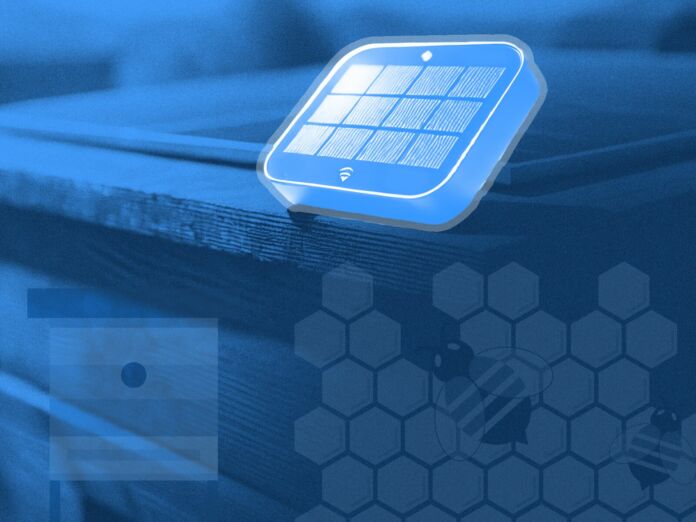
Mark Patrick – October 31, 2024
Collected at: https://www.iotforall.com/enhancing-disaster-management-with-solar-powered-iot-solutions
In our rapidly evolving world, the increasing frequency and severity of natural disasters present an increasing threat. According to the 2022 Global Assessment Report (GAR2022) by the UN Office for Disaster Risk Reduction (UNDRR), there were between 350 and 500 medium- to large-scale disasters annually over the preceding twenty years, with a predicted to increase to 560 per year by 2030. IoT disaster management is here to help.
As we strive to mitigate these risks, deploying IoT networks has become essential for disaster prevention, management, and recovery. The effectiveness of IoT sensing networks depends on their ability to remain operational under all circumstances. This is especially crucial in disaster-prone or remote areas where traditional power infrastructure may be lacking.
The Challenges of Maintaining Operational IoT Networks
Regardless of IoT network’s purpose, deployments in disaster-prone areas or remote environments present significant design challenges. A node’s power supply is a primary concern. Traditional grid sources or batteries often prove impractical for several reasons:
- Accessibility issues: Many IoT devices operate in remote locations, such as forests, islands, or mountainous regions, where they lack access to a power grid. Batteries can serve as an alternative in these areas. However, for more sophisticated devices, their battery life may be insufficient, leading to frequent replacements that are challenging and costly.
- Maintenance challenges: Repairing power infrastructure or changing batteries in remote areas is difficult and risky, especially during disasters. This can lead to periods of downtime where IoT devices are inoperable, reducing the effectiveness of monitoring or disaster management efforts.
- Sustainability concerns: Disposable batteries pose environmental risks because they require frequent replacement and contribute to waste.
Overcoming these challenges is critical to ensuring the success of outdoor deployments. Solar power can play a key role in addressing these issues.
The Role of Solar Energy in Powering IoT Devices
Advances in photovoltaic (PV) technology, particularly in the miniaturization and efficiency increase of cells and their supporting converters, as well as developments in rechargeable batteries, have made solar power an ideal energy source for a wide range of outdoor IoT use. Where IoT monitoring devices are essential, like open fields, forests, and oceans, these devices help warn of a wide range of natural disasters. Solar energy is abundant in these areas and provides a continuous power supply, allowing for extended usage without reliance on grids or frequent upkeep.
This autonomy is also critical in disaster management. This autonomy is also critical in disaster management. Hurricanes, wildfires, or floods can damage energy infrastructure, disrupting IoT-based services that relay information or assist in disaster management. These services may fall silent if they depend on a grid energy source.
In sunny conditions, miniaturized PV cells paired with efficient power management integrated circuits (PMICs) offer a dependable power source for standalone low-powered IoT nodes. Furthermore, PV cells can be supported by small rechargeable batteries, including compact surface mount device (SMD)-based solid-state cells, that enable this energy to be captured for use during low- or no-light conditions.
Although the initial investment in solar-powered IoT systems may be higher than using disposable batteries, the long-term savings make it worthwhile. Reduced maintenance and the elimination of battery replacement costs create a cost-effective and sustainable solution.
Preventing Natural Disasters with Solar-Enabled IoT
One of the finalists, Patrick Whetman, developed an AI-driven IoT system that combines solar power with wireless communication technology. This continues to monitor and protect native bee populations on a remote British island. The system used a compact and integrated system-in-package (SiP), which offers low-power LTE communication for various single-device, low-power cellular IoT designs. The Apis mellifera mellifera bee (Figure 1), native to this area, faces a threat from non-native honeybees introduced by other beekeepers.

Harnessing Solar-Powered IoT for Early Detection and Intervention
Whetman’s system relies on solar-powered sensors to detect changes in bee activity. AI then analyzes this to predict potential swarming behavior. This early detection enables timely interventions to protect the bees, demonstrating how solar-powered IoT can address ecological threats.
In addition to safeguarding vulnerable species from small-scale natural disasters, solar-powered IoT networks also aim to mitigate potential catastrophes in larger ecosystems.
Dryad Networks has developed Silvanet, an innovative wildfire detection system that utilizes solar-powered gas sensors discreetly positioned within trees. These sensors, located approximately three meters above the ground, monitor the air for any alterations in gas composition using chips from Bosch. This includes detecting higher levels of carbon monoxide, which can indicate a forest fire (Figure 2).

Each sensor’s perception is supported by machine learning (ML) analytics to minimize false positives by differentiating between genuine fires and other sources of gas emissions. Dryad Networks has deployed these sensors across Europe and North America and is actively scaling up operations. Technologies like Silvanet have the potential to revolutionize efforts in combating wildfires. Solar power plays a crucial role in mitigating these devastating events.
Conclusion
As technology continues to progress, the intelligence and performance of solar-powered IoT devices will grow. This approach will empower engineers to create a more secure and resilient global community. By combining perception, communication, and analytic technologies, we can better predict, combat, and recover from a wide range of natural and manmade disasters, both small and large-scale.

Leave a Reply